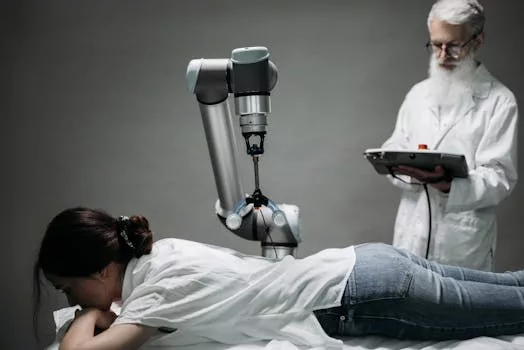
“
The Convergence of AI and Wearables: Shaping the Future of Personal Tech in 2025
The Convergence of AI and Wearables: Shaping the Future of Personal Tech in 2025 is an exciting and rapidly evolving field. As we navigate the complexities of modern life, the integration of artificial intelligence (AI) and wearable technology is poised to transform the way we live, work, and interact with one another. In this article, we will delve into the latest developments and innovations in AI-powered wearables, exploring their potential to revolutionize various aspects of our lives, from health and wellness to entertainment and beyond.
Introduction to AI-Powered Wearables
Wearable technology has come a long way since the introduction of the first smartwatches and fitness trackers. Today, we have a wide range of wearable devices that can track our physical activity, monitor our vital signs, and even provide personalized recommendations for improvement. The integration of AI into wearables has taken this technology to the next level, enabling devices to learn from our behavior, adapt to our needs, and provide more accurate and insightful feedback.
AI-powered wearables are equipped with advanced algorithms and machine learning capabilities that allow them to analyze vast amounts of data, identify patterns, and make predictions. This enables them to provide users with personalized recommendations, real-time feedback, and predictive insights that can help them make informed decisions about their health, wellness, and lifestyle.
Applications of AI-Powered Wearables
The applications of AI-powered wearables are diverse and far-reaching, with potential uses in various industries, including healthcare, fitness, entertainment, and education. Some examples of AI-powered wearables include:
- Smartwatches that can detect irregular heart rhythms and alert users to potential health risks
- Fitbits that use machine learning to track sleep patterns and provide personalized recommendations for improvement
- Augmented reality (AR) glasses that use AI to enhance the user experience, providing real-time feedback and interactive guidance
- Wearable devices that use AI to monitor mental health, detecting early warning signs of anxiety and depression
These examples illustrate the vast potential of AI-powered wearables to transform various aspects of our lives, from health and wellness to entertainment and beyond. As the technology continues to evolve, we can expect to see even more innovative applications of AI-powered wearables in the future, as highlighted in our post on Wearable Tech 2025: Innovations That Will Change How We Interact with the World.
Benefits and Challenges of AI-Powered Wearables
The integration of AI into wearables offers numerous benefits, including:
- Personalized feedback and recommendations
- Real-time monitoring and alerts
- Improved accuracy and insights
- Enhanced user experience
However, there are also challenges associated with AI-powered wearables, including:
- Privacy concerns: The collection and analysis of personal data raise concerns about privacy and security.
- Accuracy and reliability: AI-powered wearables are not always accurate or reliable, which can lead to false positives or false negatives.
- Dependence on technology: The increasing reliance on AI-powered wearables can lead to a lack of awareness and understanding of our own bodies and health.
As the technology continues to evolve, it is essential to address these challenges and ensure that AI-powered wearables are developed and used responsibly. For more insights, check out our article on Wearable Tech in 2025: Bridging the Gap Between Health and Technology.
Conclusion
In conclusion, the convergence of AI and wearables is revolutionizing personal tech, enabling new levels of convenience, health monitoring, and personalized experiences. As we look to the future, it is essential to stay informed about the latest developments and innovations in AI-powered wearables, exploring their potential to transform various aspects of our lives. By harnessing the power of AI and wearable technology, we can create a brighter, healthier, and more connected future for all.




